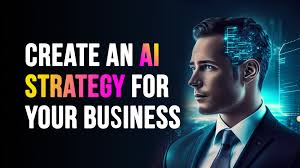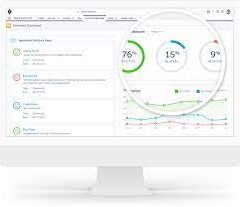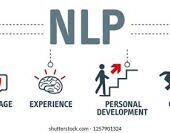How to Create a Winning AI Strategy for Your Business
To maximize the value of AI, organizations must align their AI projects with strategic business objectives. Here’s a 10-step guide to crafting an effective AI strategy, including sample templates to support your planning.
While AI adoption is on the rise, many companies still struggle to unlock its full potential. According to the 2024 IDC report Scaling AI Initiatives Responsibly, even organizations with advanced AI practices, termed “AI Masters,” face a 13% failure rate, while those still emerging in AI see a 20% failure rate. Challenges such as poor data quality and cultural resistance often contribute to these failures.
To avoid these pitfalls, companies need to adopt a more deliberate and strategic approach to AI implementation. As Nick Kramer from SSA & Company states, “It’s not just about implementing the right technology; a lot of work needs to be done beforehand to succeed with AI.”
What is an AI Strategy and Why is it Important?
An AI strategy unifies all necessary components—such as data, technology, and talent—required to achieve business goals through AI. This includes:
- Successful deployment of AI initiatives
- Ensuring continuous benefits from AI solutions
- Managing risks and maximizing ROI from AI investments
A well-designed AI strategy sets clear directions on how AI should be leveraged to achieve optimal outcomes within the organization.
10 Steps to Craft a Successful AI Strategy
- Conduct a Readiness Assessment Before diving into AI, assess your organization’s current technological and operational readiness. This includes evaluating data infrastructure, employee skills, and existing AI implementations. Identifying gaps and areas for improvement will guide the AI roadmap.
- Develop a Strong Data Program Data is central to AI success. Many organizations face challenges with data storage, management, and quality. Implementing robust data governance practices—focusing on data security, privacy, and integrity—is critical for AI adoption.
- Foster an AI-Ready Culture AI transformation is as much about people as it is about technology. Leaders need to ensure their workforce has the skills and mindset to embrace AI. A strong change management plan is essential to integrate AI into organizational culture effectively.
- Align AI with Business Objectives Avoid implementing AI for technology’s sake. Instead, tie AI initiatives to specific business goals. Define how AI will help achieve these objectives and identify the right AI solutions to address business needs.
- Prioritize AI Initiatives With AI adoption accelerating, particularly in generative AI, organizations need a clear method to prioritize projects. Start with initiatives that offer the highest short- and medium-term returns and build momentum with these successes.
- Establish Success Metrics Defining KPIs and metrics is essential to measure the effectiveness of AI projects. While some outcomes may be uncertain, having flexible yet accountable metrics helps track progress and demonstrate AI’s value.
- Create an Execution Pathway Build a structure that enables the execution of AI initiatives, from experimentation to deployment. Encourage innovation by supporting calculated risks and ensuring collaboration across departments for AI development.
- Industrialize AI Initiatives Treat AI as a product that requires continuous improvement. Have plans in place for scaling AI capabilities, integrating AI into existing technology architectures, and iterating on AI models to adapt to evolving data and business needs.
- Establish an AI Center of Excellence Bring together experts from across IT, data science, and business units to collaborate on AI projects. This multidisciplinary team helps brainstorm AI use cases, share best practices, and support AI-driven innovation.
- Implement AI Governance Managing AI-related risks—such as data privacy, cybersecurity, and regulatory compliance—is crucial. Establish governance frameworks that ensure responsible AI usage, audit outputs, and maintain transparency in AI processes.
Resources for AI Strategy Templates
If you’re ready to start building your AI strategy, here are several resources offering templates and guidance:
- Info-Tech Research Group: Their Build your AI Strategic Roadmap template helps organizations create IT-led, business-aligned AI strategies.
- Prolego’s Generative AI Strategy Template: This multiyear template is designed to support organizations in building GenAI capabilities across five dimensions: infrastructure, talent, governance, tools, and capabilities.
- Bernard Marr’s AI Strategy Template: Marr, a futurist and thought leader, provides a structured approach to developing AI strategies with actionable templates.
- Cascade: Cascade’s template includes objectives, projects, and KPIs across key focus areas for AI adoption.
- Tectonic: Tectonic is ready to help you build out your AI road map with our insights 2 actions approach.
- WSI World: This template offers guidance on creating AI principles to manage risks while reaping the benefits of AI.
By following these steps and utilizing the right resources, businesses can ensure they capture AI in ways that align with their strategic goals and maximize their competitive edge.













